THE CULTURAL
WORKSHOP
OF THE AEGEAN
The island’s cultural activities are supported by the Municipal Organization for Cultural Development, Kindergartens, Athletics and Welfare of Leros (DOPAISAP), and by the initiatives of the three local associations, "Panagia of Castle" (Virgin Mary of Castle), "Leros Theatre Group" and the "Artemis" cultural society.
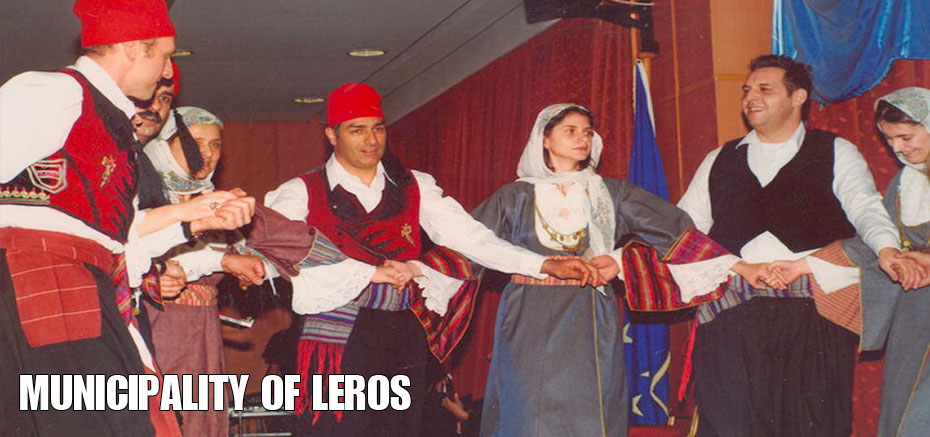
The Leros Municipal Organization for Cultural Development (DOPAISAP) is based at Kamara and organises all the Municipality’s cultural and social events both on and away from Leros every year. It runs one Friendship Club with creative and musical workshops, the Municipal Market and the Municipality of Leros Philharmonic band.
The "Panagia of Castle" and "Artemis" Society organises dance performances with both popular and traditional music. They both have a children’s choir and organises sports activities and maintains a part of the library.

Leros’s Theatre Group works with amateur troupes from various organizations to perform plays on a yearly basis. The Theatre Group has been able to attract a significant number of Leros’s new inhabitants, creating a theatre-going public which is something new for the island. This would also explain why many of the plays are performed away from Leros.
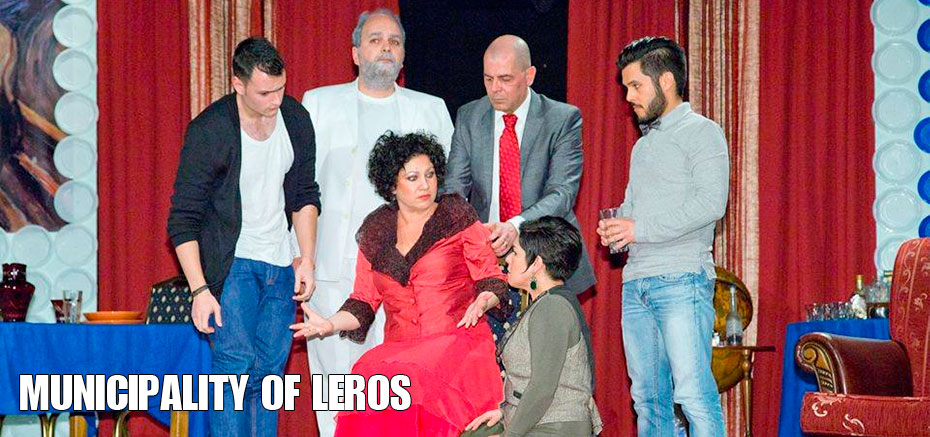
Come and enjoy a wonderful evening, learn traditional dances or watching a play performed by amateurs, who nonetheless are young people full of talent and energy.
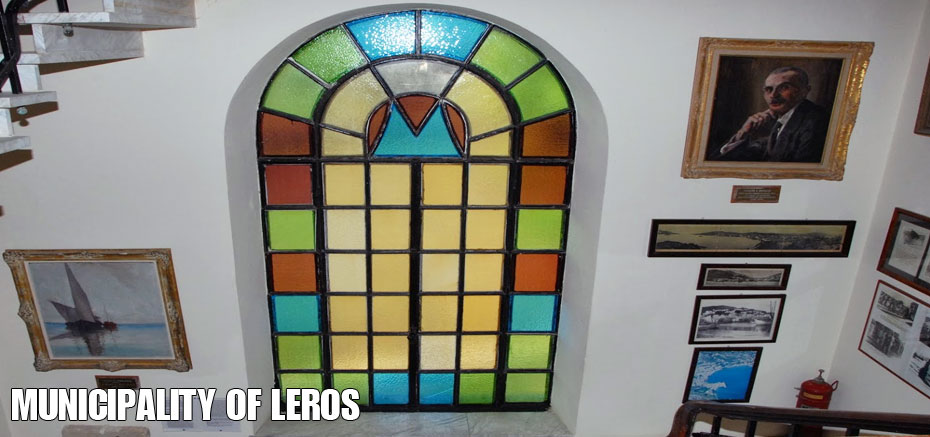
Respectable cultural performances as well as any number of festivals with the participation and performance by local music and dance groups are organized every summer at Lakki and Platanos and peak the interest of every visitor to the island.
- Platanos: The Castle of the Virgin Mary Festival , on 15th August.
- Xerokambos: The Feast of Agios Fanourios, on 27th August. Display of the Pressing of Grapes for wine takes place.
- Agia Marina: the celebration of the Patron Saint’s day on 17th July.
- Gourna: A reenactment of traditional grain/wheat threshing takes place. Free traditional snacks and wine are offered at this local Leros festival.
- Wine – The Vine-growers Feast: Takes place every August with an abundance of local wine, dance and traditional folk music.
- Drymonas: In August, the Drymonas Festival at the beach by the same name is a very popular event. This is where the local Culinary Festival takes place with authentic food of Leros and an abundance of wine and music can be enjoyed by
- Trawl Fishing– Fisherman’s Feast: In September, every year at Panteli, the Feast of Trawl Fishing – Fisherman takes place, where what the fresh fish is honoured, naturally.
- Lakki: Every last Sunday of Carnival days, a great masquerade festival takes place on the beach, with masked people everywhere.
- Alintia – Nautical games: The first ten-day period in August, athletic games are organized at Alintia. A musical evening closes the games.
The People of Leros
From antiquity to today, the people of Leros have been influence by foreigners and Greeks alike who have come to the island. However, they have somehow always managed to gain positively from the various cultures, to isolate themselves to a certain degree and in doing so have managed to preserve their own genuine tradition and maintain their identity.
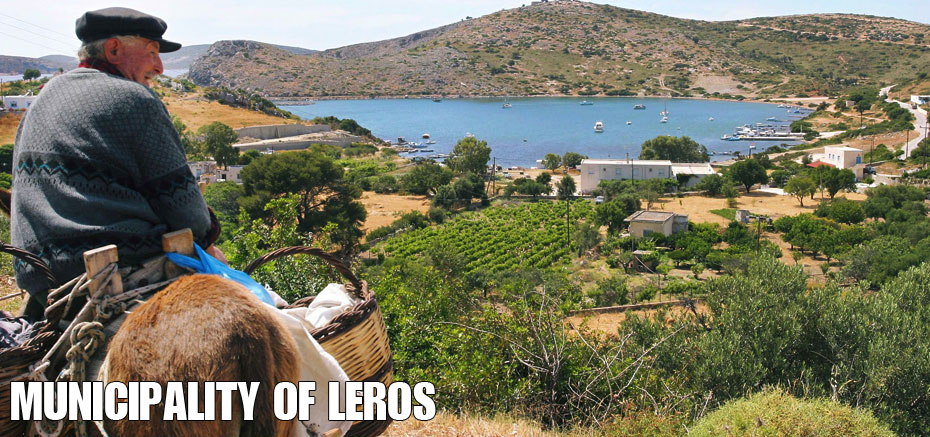
During the early Christian era, Leros enjoyed a cultural boom and much prosperity. Good respectable citizens, warm, open-hearted and hospitable the people of Leros have always loved their land and everything that binds them to it. As islanders, most were always able sailors and fishermen. Only a few were farmers, given that the island is small and good, agricultural land is limited. Among them, however, one could meet excellent craftsmen and artisans who built boats and homes.
Today’s Lerians love and develop culture and tradition and they enhance their spirituality as best they can.
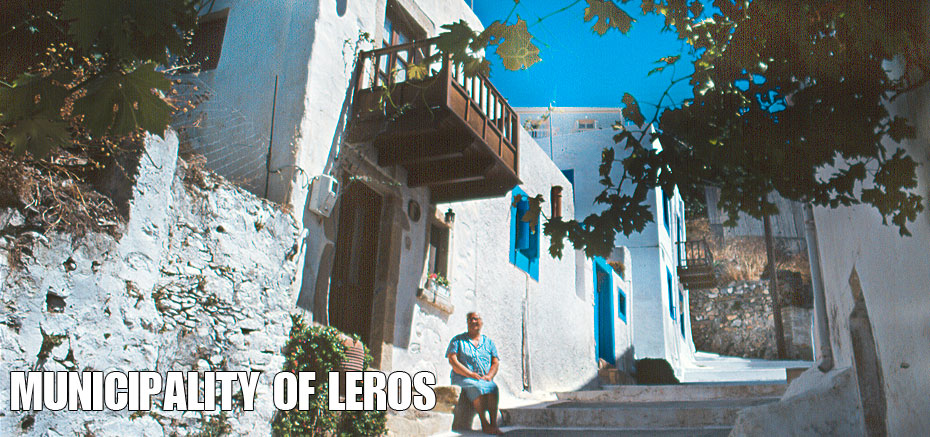
The Folkloric and Historical Museum of Leros is housed in the restored Tower of Beleni and exhibits rare artefacts. In the Modern Archaeological Museum, fine artefacts dating from the island’s pre-historic, historic and medieval periods are on the display. Inscriptions, grave markers, coins, mosaics and vessels are but examples of what can be seen upon visiting the museum.
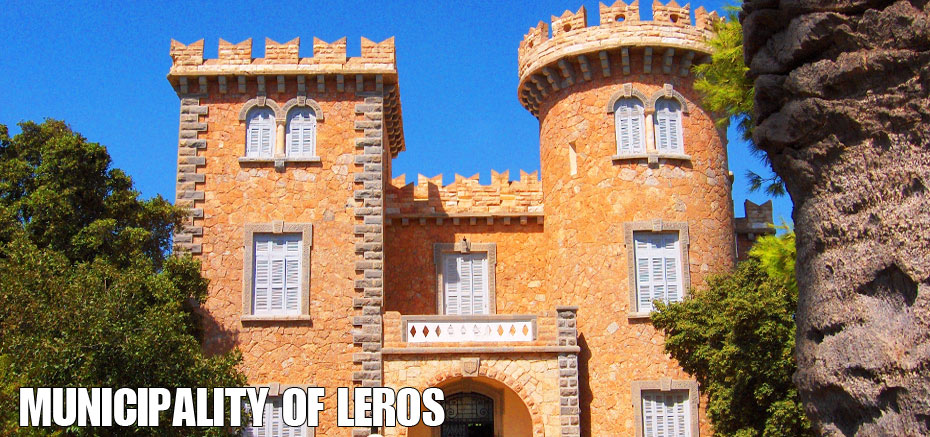
“Without jeopardizing and betraying their local customs and traditions, the people of Leros have managed to harmoniously adopt the positive elements of modern life.”
Every summer, the Municipality of Leros and the local Municipal Enterprise for Cultural Development and Welfare organise a number of cultural and artistic events in close collaboration with local associations. Such events include concerts, theatrical performances and productions, water sports, art exhibitions and lectures.
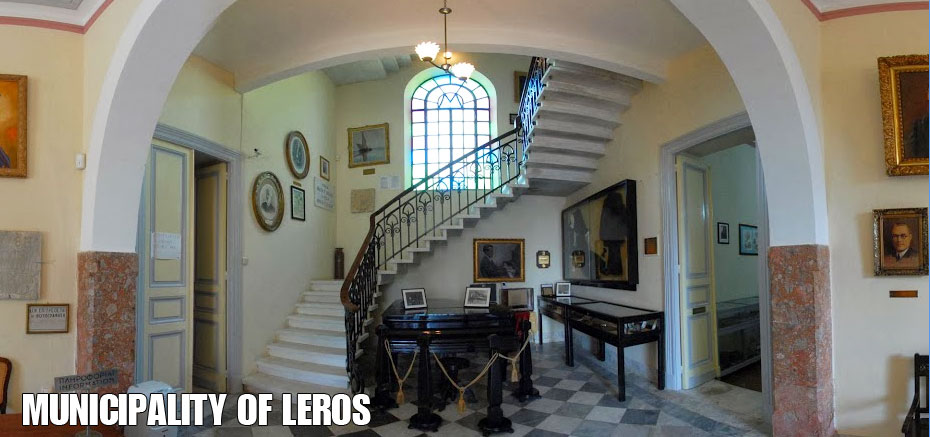
The Lerians state their presence in every way and participate as best they can, they are proud of their identity and their home land, and love it deeply and keep it dear to their hearts wherever they may go.
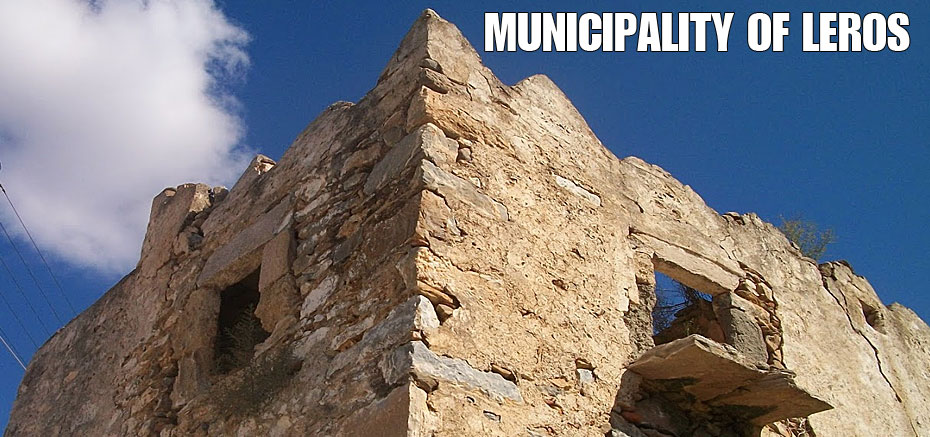
They are proud, insubordinate people. Throughout the island’s long history and difficult times, the fierce temperament of the people of Leros proudly kept the Greek flag flying high even when conquerors and various conquistadores tried to leave their mark on the island. Heads were held high while demonstrating the strong will of free-spirited people who never forget.
CULTURAL - HISTORICAL ENVIRONMENT
Leros, the island of Artemis, Goddess of hunting, presents an historical interest, since there has been demonstrated evidence of life on the island throughout all historic periods. Archaeological excavations and findings have brought this to light. Some human remains were un-earthed from a Neolithic settlement in Partheni. Excavations of recent years support the theory that the ancient town of Leros was near the harbour of Agia Marina. Several ancient writers have referred to the presence of an ancient temple of the Virgin Artemis in Partheni. It is believed that this temple lies presently under the ruins of an early Christian Byzantine church in the area. Furthermore, coins and tombs with familiar Macedonian names from other regions reveal a constant, historic course from the Classic to the Hellenistic periods.
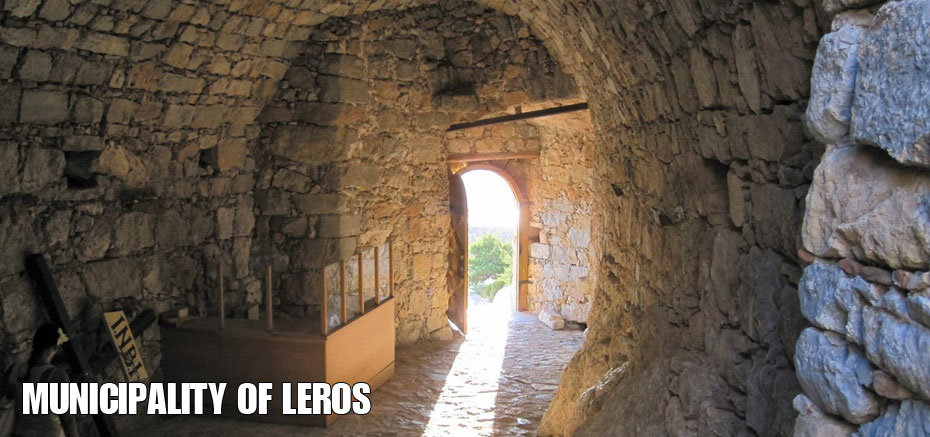
On 1309, the Knights of St. John of Rhodes conquered Leros, which constituted a part of the Province of Kos combined with seven other islands. The St. John’s battalion repaired and modified the Fort of Leros between the years 1300 to 1511. In January 1523, Leros surrenders to the Ottomans. Sultan Suleiman grants the privilege of self-administration and self-rule to the people of the Dodecanese, except those of Rhodes and Kos.
After the Revolution of 1821 and up to 1830, Leros is part of the Greek State, until the borders of the newly-established state were set. This was declared by the London Deed of the 3rd February, 1830. Later, the protector forces hand-over the Dodecanese to Turkey.
On 13th May 1912, Leros is occupied by the Italians. The Italian “Government’s Possession of the Islands” enforces city-planning for Lakki and converts it into a military port. At the same time, the island’s armament begins and by 1930, 26 permanent batteries had been built with a total of 115 cannons. Further, the Navy Base with personnel numbering 6,000 people is established, while an airport at Agios Gerogios is being built.
On 3rd September 1943, Italy surrenders and British soldiers land on the island. The Battle of Leros, from September to November 1943, follows. During the battle, 190 German air raids take place on the island causing great distruction to the town of Leros as well as the Castle.







